7 Fun Facts About Herons
Camilo WalkerThe heron is a marsh bird that lives everywhere. Standing on one leg in the middle of the swamp, they wait for a frog or a fish to pass by. To wait for prey, they have to spend a lot of time in cold water, so they stand on only one leg, warming the second. It is thanks to this position that the bird has become well recognizable. What’s more, it’s often used as a nominal name. For example, “frozen as a heron”. It’s not all fun facts about herons. Herons are not divided into flight species and sedentary herons. Depending on food availability and climate, birds, regardless of the species, decide whether to fly away or stay for the whole year. Despite external similarities, they are in very distant kinship with storks. Remarkably, these birds, though they are considered to be aquatic inhabitants, do not always settle near water bodies. They can be found in wet, bay meadows and reed thickets. We have collected fun facts about herons for you.
7 fun and interesting facts about herons
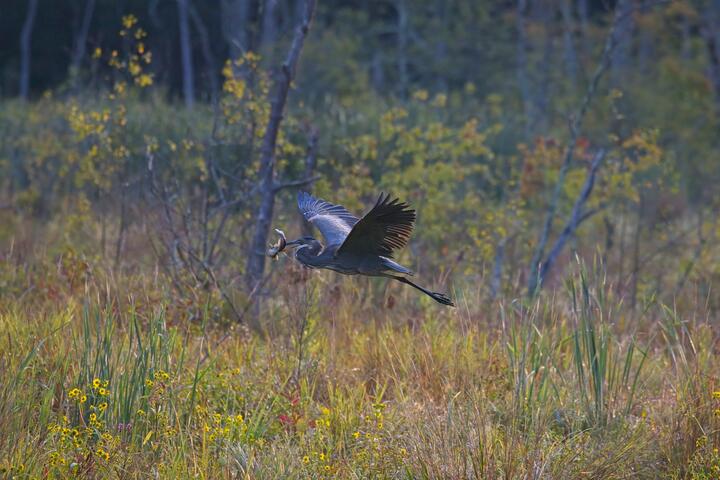 Photo by Mohan Nannapaneni on pexels
Photo by Mohan Nannapaneni on pexels1.During the breeding season, herons grow long openwork feathers. Once upon a time, they were in great demand among fashion lovers.
2.These feathers cannot secrete fat, which protects the feathers from getting wet. Instead, their bodies are powdered by crumbled down feathers.
3.Daisy is considered monogamous birds, although they only start a family for one season. Only occasionally can one find a couple who have lived together for several years.
4.Their meat tastes unpleasant. But despite that, many noble people liked to make falconry for them.
5.They communicate with congeners by moving their necks and clicking their beak. These birds can’t sing, only in the breeding season, you can hear their voices.
6.In the mating season, these birds not only grow beautiful feathers. All places where feathers are absent acquire orange or pink. Beak becomes the same.
7.The heron always swallows the fish with its head forward. This way, it protects the throat from injury.
Top 3: The funniest facts about a heron
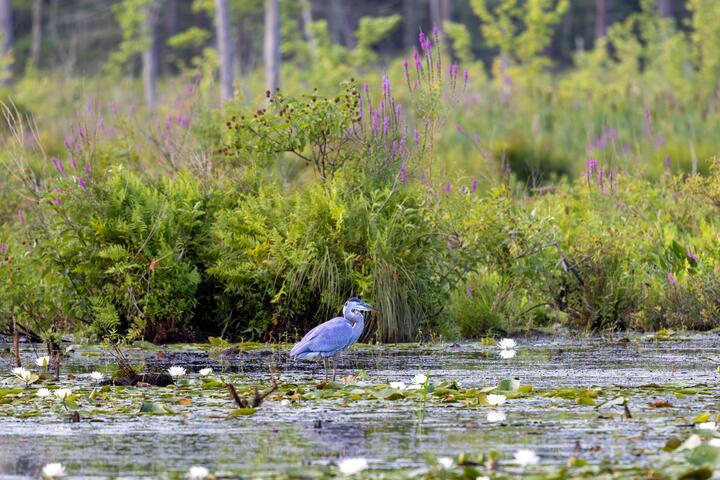 Photo by Mohan Nannapaneni on pexels
Photo by Mohan Nannapaneni on pexels1.These birds don’t always wait peacefully for their prey. Sometimes they cover the water with their wings to cover it from the sun. In the shadows, the fish are collected, from which the bird chooses the most suitable one.
2.Sometimes herons gather in packs and hunt together. They scare the fish and catch it when it comes to its senses.
3.Usually, these birds settle far away from people. But a small population of these birds has formed in Amsterdam. They live there with no fear of people at all.
Facts about heron: natural enemies, a population
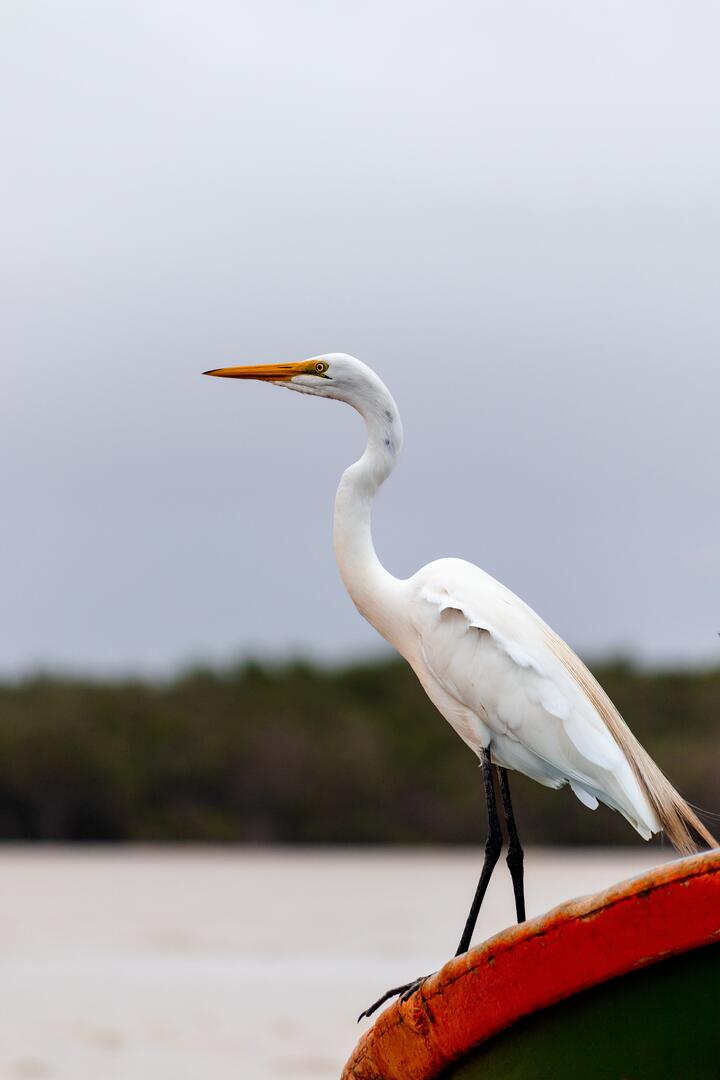 Photo by Wallace Silva on pexels
Photo by Wallace Silva on pexelsIn the old days, it was believed that they eat all the best fish in the ponds, leaving only sick and old individuals. For this, the birds were mercilessly exterminated in many places. About half a century ago it became clear that they were water attendants, they only killed sick and weakfish. Now, these birds have returned to some habitats, but their historical range has never fully recovered.
There are few natural enemies of the herons. Foxes, raccoon dogs, water rats. They rarely dare to attack an adult bird and hunt chicks. Birds of prey can kill an adult, but they rarely do. The forties and water rats often break nests and eat eggs. Because of this, only 35% of the chicks have lived for over a year. They also die because of climate change. They can’t live during the long cold spring and heavy rains and they can’t adapt to it either.
Herons are found almost all over the world
These birds have a huge range and are not found only in Antarctica. Most species prefer to settle in aquatic ecosystems – in swamps, on the banks of rivers, lakes, and oceans. Some species feel quite well in saltwater.
Herons are 100% predators
Since most species live in swamps, their main prey is inhabitants of waters and shores. These include fish, salamanders, crabs, shrimp, frogs, and aquatic insects. Herons, which live in more arid areas, prey on mice, rats, small lizards, snakes, and even birds.
Herons are effective hunters
Herons prefer to hunt in shallow water. They have excellent eyesight and are therefore able to hunt both day and night. Some species purposely throw seeds and fruit into the water to attract more fish. The long, curved neck is specially adapted to swiftly attack their prey. During the hunt, the heron pierces its prey with its beak and then tries to swallow it whole. If the fish is too large, the heron may suffocate.
Herons are social birds
Herons prefer to live in colonies. One colony can consist of several species of herons and even include other waterfowl. At the same time, herons are monogamous. A pair stays together for the entire breeding season.
Herons are great flyers
Herons can reach speeds of up to 48 km/hour. In-flight, a heron’s neck takes a zigzag shape and her long legs hang freely in the air.
Herons are caring parents
They are responsible for taking care of their offspring. A pair builds a nest high up in a tree so that predators cannot reach it. Males and females carry leaves and branches from the surrounding area. A female may lay four to seven eggs at a time. Most species have white or blue eggs, but there are waders that lay olive-colored eggs. Both females and males take turns in hatching.
The young are most vulnerable to predators
Herons’ main natural enemies are minks, foxes, and raccoons. They rarely attack adults. Predators prefer to climb into nests for eggs and chicks.
Herons are migratory birds
Most species migrate varying distances. There are only a few species that stay in the same area year-round. Migration to new areas occurs at night. Herons prefer to migrate in small groups.
Did you like fun facts about herons? Share it with your friends.
See also Interesting facts about great blue heron
Fun Facts About Herons
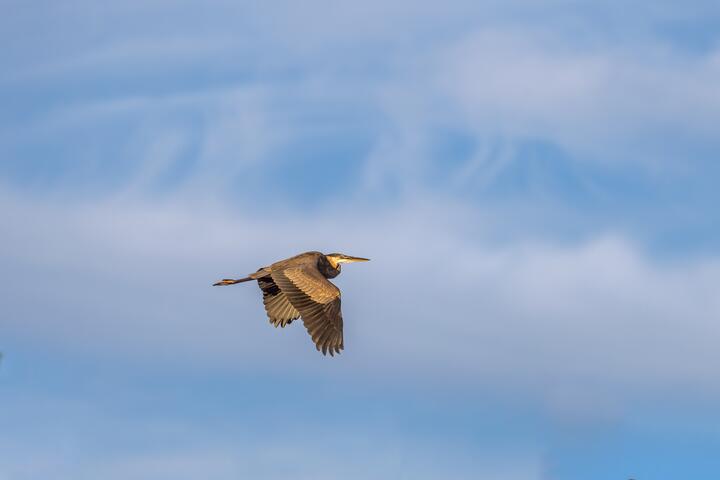 Photo by Mohan Nannapaneni on pexels
Photo by Mohan Nannapaneni on pexelsHerons are a common sight, and the name “heron” comes from the fact that they are long-legged and often stand on one leg in a swamp to hunt for food. Herons also spend much of their time in the water, where the cold temperature is useful for keeping the second leg warm. Herons have a wide range of habits, and their unique position makes them easily recognizable.
The great blue heron is one of the most beautiful birds in the U.S., and its plumage can vary from white to grey to black. Although herons are a highly intelligent and sociable species, they are not often seen together. Heron pairs only interact on the nest, and fly separately to find food. Their body colors can change, as well. They can live for up to one week without a meal, so this bird is an important part of the ecosystem.
The Great Blue heron has a very large beak. Their bill is very sharp, and it can reach up to 30 miles per hour. Herons can survive in any wetland habitat in North America. Some of these birds do not migrate, while others are year-round residents of coastal areas. Regardless of the region in which they spend their time, they have a wide range of behaviors and can be a part of the daily life of people living in cities.
Herons come in a variety of colors. Females are the most common in the United States, with white or grey plumage. They breed annually and have two sexes. They can be found on every continent except Antarctica. They are part of the Animalia order, class Aves, and family Ardeidae. Despite their beauty, however, herons can be quite dangerous.
Like most birds, herons are prone to predators. While their plumage is usually white or grey, they can also be black or gray. While they are mainly carnivores, herons can eat insects, fish, and even humans. The best way to spot a heron is to observe them in its natural habitat. If you see a heron, you may even spot a heron in your neighborhood.
Herons are the most beautiful birds in the world. They are very elegant and have a long neck, pointed beak, and a rounded, gray plum. They are the only birds in the family to live on the water. The males are often larger than females, but despite their differences, they are hard to distinguish from each other. The only difference between herons is the color of their beaks.
Herons are a common sight in many countries, but they are not very familiar to people. In the US, herons are a prominent part of our landscape, and their plumage varies from white to grey to black. Their size makes them very attractive in the eyes of the public. During the day, they sit and rest in a sheltered area, and at night, they sleep in a tree.
Herons can be found in the United States and are a very common sight. They have huge wings that can measure up to six feet across. Herons are also easily recognizable by their long, S-shaped neck and their dagger-like bills. Their feathers are a variety of colors, from white to black. They feed primarily on fish, but can also suffocate, and live in a small house or apartment.
Although herons can be a beautiful sight in the wild, they are also very elusive. In Amsterdam, the species is a favorite of many people, and they can sometimes be found in the city center without being observed. In some areas, they live in a small colony with other types of waterbirds. There are three main species of heron in the United States. While they have a lot in common with other kinds of birds in the region, their natural habitat is a prime spot for their socialization.
The great blue heron is the largest heron in the world. Its long legs and neck make it easy to catch prey. While herons are generally omnivorous, they can still be nocturnal. They are nocturnal and usually feed at night. In the wild, they live in a colony of about twenty birds. Among the many species of herons in North America, the great blue heron is the most widely spread in the continent.
- WildlifeInteresting Facts About Hippos

- WildlifeInteresting Facts About White TigersBy Noah Young

- WildlifeInteresting Facts About Tapir You Need To KnowBy Noah Young
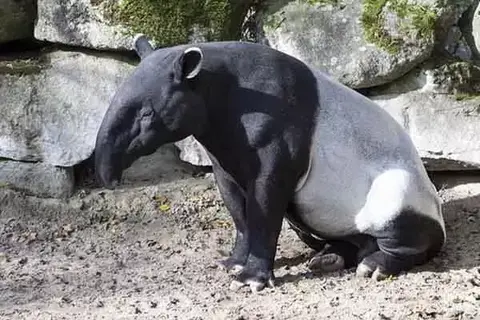
- RodentsFacts about Hedgehogs that you may not knowBy Nolan Foster
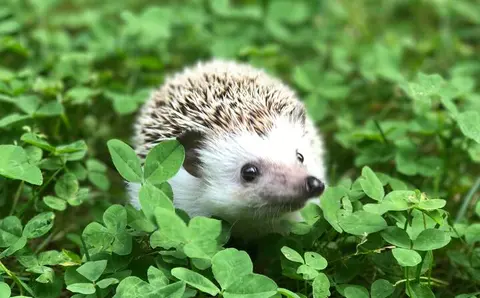
- Cats25 Interesting Facts About CatsBy Amelia B

- CatsCan Cats Eat Chocolate Pudding?By Murphy Scott

- WildlifeAmazing Facts About Spider MonkeysBy Nolan Foster

- DogsWhy Does A Dog Dig Holes In The Ground?By Camilo Walker

- WildlifeWhat Monkey Has A Red Bottom? Monkeys With Red BottomBy Nolan Foster

- DogsWhat You Should Know About Your Dog’S FoodBy Murphy Scott
